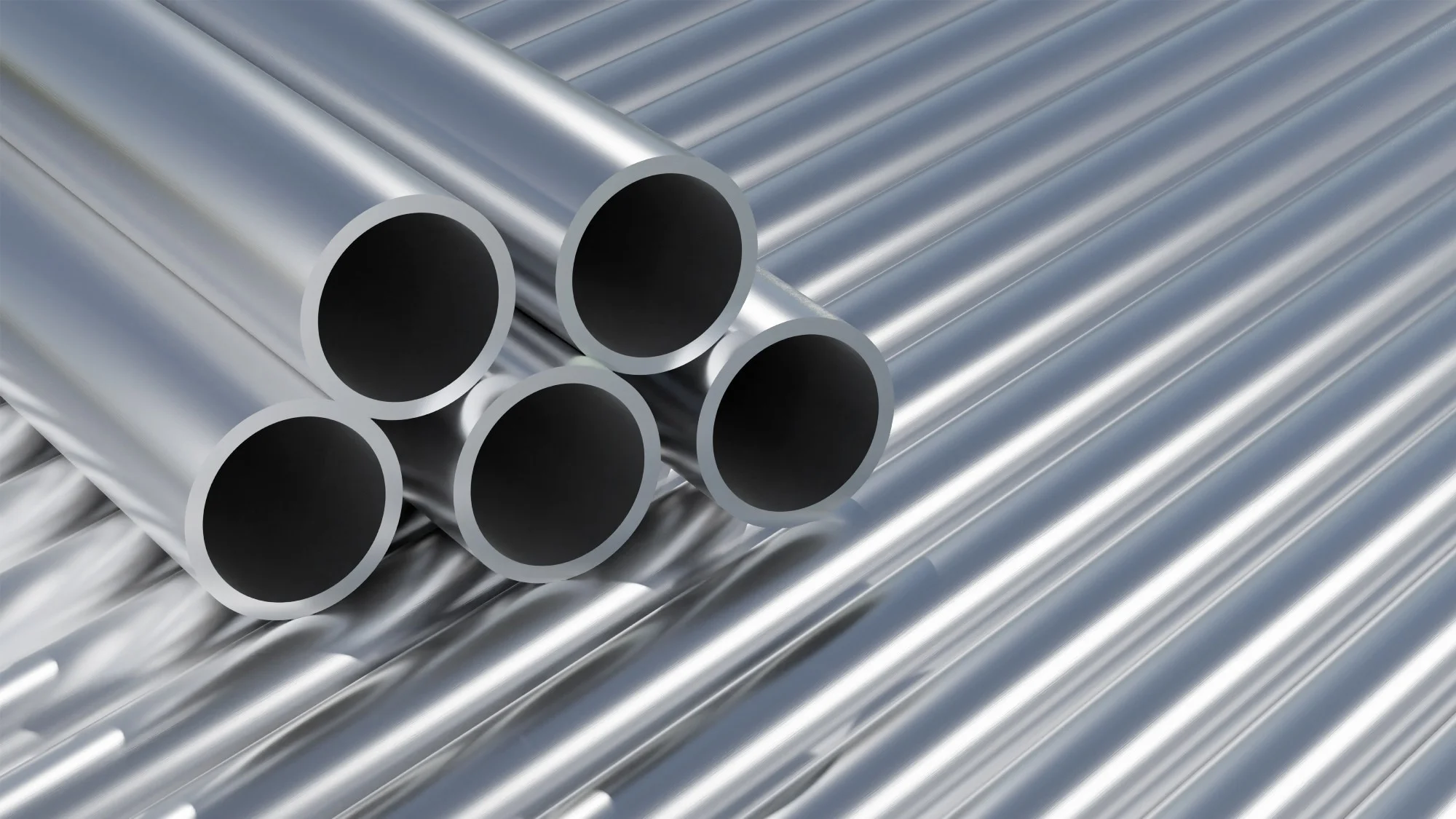Blog
Aluminum’s Strength: A Guide to Its Mechanical Properties

Aluminum is a versatile, widely used metal with unique properties that make it essential in industries like aerospace, automotive, and construction. Its key mechanical characteristics—tensile strength, hardness, and resistance to fatigue and corrosion—make it a preferred material for creating strong, lightweight, and durable products. This guide explores why aluminum remains a top choice for innovation.
What Are Mechanical Properties?
Mechanical properties describe how a material responds to applied forces or loads. These characteristics determine a material’s suitability for a specific application and predict its behavior under stress, strain, and various environmental conditions. For aluminum and its alloys, the most important mechanical properties include tensile strength, yield strength, hardness, fatigue resistance, and corrosion resistance. Each of these plays a vital role in the performance and durability of the final product.
Tensile Strength
Tensile strength, often referred to as ultimate tensile strength (UTS), is the maximum stress a material can withstand while being stretched or pulled before it begins to fracture. It’s a fundamental measure of a material’s strength and ability to resist being pulled apart.
Pure aluminum has a relatively low tensile strength, but this can be significantly increased by adding alloying elements such as copper, magnesium, silicon, and zinc. For instance, some high-strength aluminum alloys used in the aerospace industry can achieve tensile strengths comparable to that of steel, but at a fraction of the weight. This high strength-to-weight ratio is one of aluminum’s most significant advantages. The specific tensile strength of an alloy depends on its composition and the heat treatment process it has undergone.
Yield Strength
Yield strength is another critical measure of a material’s durability. It defines the point at which a material begins to deform permanently, or “plastically.” Before reaching its yield strength, a material will deform elastically, meaning it will return to its original shape once the applied force is removed. However, once the yield strength is exceeded, the deformation becomes permanent.
For engineers and designers, yield strength is often more important than tensile strength because it represents the practical limit of a material’s performance. Components designed for structural applications must operate well below their yield strength to avoid permanent damage or failure. Like tensile strength, the yield strength of aluminum can be tailored by adding different alloying elements and applying specific heat treatments, allowing for a wide range of performance characteristics.
Hardness
Hardness measures a material’s ability to resist localized plastic deformation, such as scratching, indentation, or abrasion. It’s a key indicator of a material’s durability and wear resistance. Several scales are used to measure hardness, including Brinell, Rockwell, and Vickers, each involving pressing a specific indenter into the material’s surface with a known force.
The hardness of aluminum alloys varies widely. Pure aluminum is quite soft, but alloying and heat treatments can substantially increase its hardness. For example, alloys containing magnesium and silicon (6xxx series) can be heat-treated to achieve excellent hardness, making them suitable for structural components that require good wear resistance. Harder aluminum alloys are often used in applications where the surface is exposed to friction or impact.
Fatigue Resistance
Fatigue resistance is a material’s ability to withstand repeated cycles of loading and unloading without failing. When a material is subjected to fluctuating stresses, even if those stresses are below the yield strength, microscopic cracks can form and grow over time, eventually leading to failure. This phenomenon is known as fatigue.
Fatigue resistance is a critical consideration in applications where components are subjected to vibrations or cyclical loads, such as in aircraft wings, automotive suspensions, and building structures. Aluminum alloys, particularly those in the 2xxx (copper) and 7xxx (zinc) series, are known for their excellent fatigue resistance. Proper design, surface finishing, and material selection are essential to maximizing the fatigue life of aluminum components.
Corrosion Resistance
Corrosion resistance is the ability of a material to withstand degradation due to chemical reactions with its environment. One of aluminum’s most celebrated properties is its natural resistance to corrosion. When exposed to air, aluminum forms a thin, dense, and tightly adhering layer of aluminum oxide on its surface. This oxide layer is highly stable and acts as a protective barrier, preventing further reaction with the environment.
This self-protecting characteristic makes aluminum an ideal material for applications in harsh or corrosive environments, such as marine settings, chemical plants, and outdoor architectural features. The corrosion resistance can be further enhanced through processes like anodizing, which thickens the protective oxide layer. Some alloys, like those in the 5xxx series (magnesium), are particularly noted for their superior corrosion resistance in saltwater environments.
Applications Across Industries
The diverse mechanical properties of aluminum and its alloys make them suitable for an extensive range of applications.
- Aerospace: The high strength-to-weight ratio and excellent fatigue resistance of alloys like 2024 and 7075 make them indispensable for aircraft structures, including fuselages, wings, and frames.
- Automotive: Automakers use aluminum to reduce vehicle weight, which improves fuel efficiency and performance. Alloys from the 5xxx and 6xxx series are used for body panels, engine blocks, and chassis components.
- Construction: The corrosion resistance and strength of aluminum make it a popular choice for window frames, roofing, curtain walls, and structural elements. Its lightweight nature also simplifies transportation and installation.
- Marine: Due to its excellent resistance to saltwater corrosion, aluminum is widely used in shipbuilding for hulls, superstructures, and components like butt weld pipe fittings.
- Consumer Electronics: The sleek, lightweight, and durable nature of aluminum makes it a premium material for laptops, smartphones, and other electronic casings.
Conclusion
Aluminum and its alloys combine strength, lightness, and durability, making them ideal for industries like aerospace and marine engineering. Their versatile mechanical properties allow manufacturers to tailor alloys to specific needs. With ongoing advancements in technology and alloying techniques, aluminum remains a key material in modern engineering.
-

 Celebrity11 months ago
Celebrity11 months agoWho Is Jennifer Rauchet?: All You Need To Know About Pete Hegseth’s Wife
-

 Celebrity1 year ago
Celebrity1 year agoWho Is Mallory Plotnik?: The Untold Story of Phil Wickham’s Wife
-

 Celebrity1 year ago
Celebrity1 year agoWho Is Klarissa Munz: The Untold Story of Freddie Highmore’s Wife
-

 Celebrity1 year ago
Celebrity1 year agoMeet Christina Erika Carandini Lee?: All You Need To Know Christopher Lee’s Daughter
















